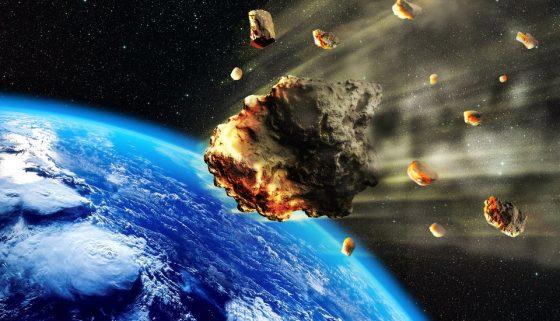NASA And ESA Announce Plans For “Insurance Policy For Earth”
Authored by Mac Slavo via SHTFplan.com,
NASA (National Aeronautics and Space Administration) and the ESA (Europeans Space Agency) are finally ready to test the Earth’s planetary defenses to see whether we can successfully defend ourselves from the apparent scourge of “space rocks”. Calling it an “insurance policy for Earth,” scientists intend to smash a spacecraft into an asteroid at over 14,000 miles per hour.
According to RT, the target they have chosen to crash a spacecraft into is the asteroid Didymos B. This space rock is roughly 160 meters in diameter, one half of a binary asteroid system. Didymos B orbits the larger asteroid Didymos A every 11.92 hours and this will help determine the ultimate success (or failure) of the mission. The Didymos system is classified as a Near-Earth Object (NEO), meaning it’s close but not too close that it might hit us, making it the perfect test subject to see how well Earth is prepared to steer an asteroid off a collision course with the Earth.
The joint asteroid impact and deflection assessment (AIDA) project launched by the ESA and NASA in 2015, and Earth’s champion selected for the mission will be NASA’s Double Asteroid Redirection Test (DART) spacecraft.
“Today, we’re the first humans in history to have the technology to potentially deflect an asteroid from impacting the Earth,” astronomer Ian Carnelli of the ESA told Technology Review.
“The key question that remains to be answered is, are the technologies and models that we have good enough to actually work? Before you drive a car, you need to have an insurance policy. Well, AIDA is the insurance policy for planet Earth.”
Both space agencies are anticipating some problems with this mission, however. Things may not go as smoothly as planned. For example, when the Japanese space agency JAXA bombed the asteroid Ryugu in April, it made a far bigger crater than anticipated. Additionally, the material on the surface behaved like sand, which may impact the effectiveness of deflection. There is no way to tell how Didymos B will react when it is struck with a man-made spacecraft.
“If gravity is also dominant at Didymos B, even though it is much smaller, we could end up with a much bigger crater than our models and lab-based experiments to date have shown,” explained planetary scientist Patrick Michel of CNRS.
“Ultimately, very little is known about the behavior of these small bodies during impacts and this could have big consequences for planetary defense.”
The DART will ram into Didymos B at 23,760 kilometers per hour (14,760mph). However, all that force will only translate into a change in the asteroid’s velocity of just a centimeter per second or so, which could change the orbital period from almost 12 hours to a mere matter of minutes.
The mission is set to launch in July 2021, with the impact expected in September 2022.
Tyler Durden
Tue, 09/24/2019 – 23:05
via ZeroHedge News https://ift.tt/2mul1ry Tyler Durden
